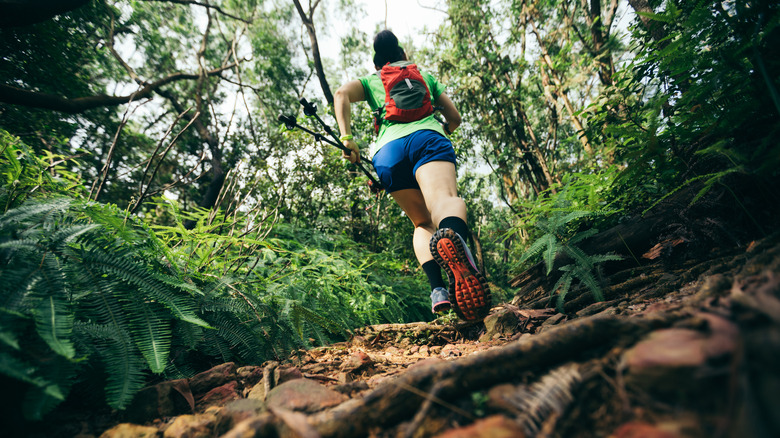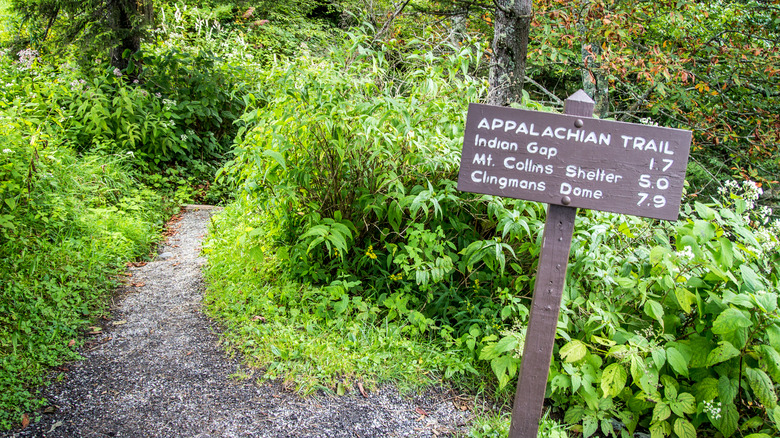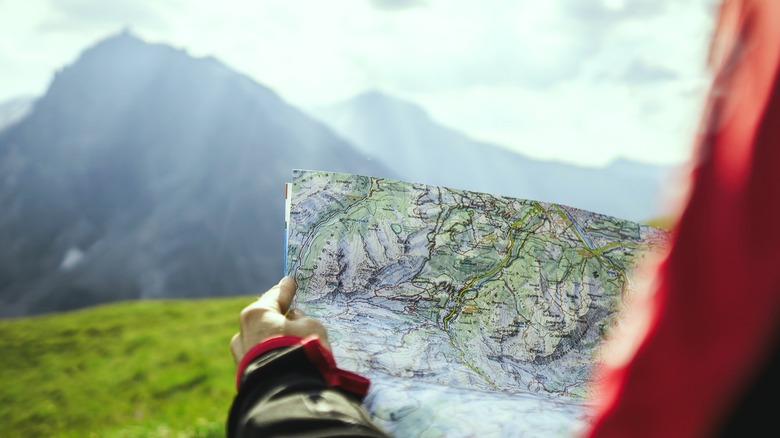Think Twice About Hiking Off-Trail
Nature's pristine siren song calls out to the trailblazing adventurer in every hiker — the whisper of unexplored terrain, the allure of untouched landscapes, and the promise of unique stories to tell. The romance of it all is undeniable. While it's tempting to forge your own path, off-trail hiking might not be the idyllic experience you envision. Instead, it could be fraught with unforeseen dangers, ethical considerations, and environmental impacts.
Formal trails are there for a reason — to allow you to enjoy nature's bounty while ensuring its conservation. In the U.S., the National Park Service's main job is to do just that. There are established laws and public review processes that determine how a national park trail must be planned, built, and maintained. Thousands of staff and volunteers work countless hours to maintain over 21,000 combined miles of trails for visitors. They upkeep routes, dispose of trash left by those unaware (or selfishly dismissive) of the "leave no trace" principle, protect wildlife, and manage beloved parks so they can be enjoyed for generations.
Off-trail hiking, or bushwhacking, is the practice of hiking where no trail exists — essentially, paving your own pathway through the forest or wherever you're hiking by whacking or cutting your way through. As you stand at the crossroads, deciding between the well-trodden route and the bushwhacking allure of the unknown, let's delve deeper into why hiking off-trail requires more than just courage and curiosity. Just because you can hike off-trail doesn't mean you should.
Venturing off-trail: risks and responsibilities
The very factors that make off-trail hiking appealing also make it dangerous. The first and most obvious reason is that unhiked terrain is unpredictable terrain. There could be hidden holes, unstable ground, unseen cliffs, or confusing areas that lead to dead ends. It's easy to get disoriented and lost without clear trail markings, even for seasoned hikers. Straying from the beaten path also increases the chances of unexpected and potentially unwelcome wildlife encounters.
Off-trail hiking might seem like a way to embrace nature, but it can actually harm the very thing you want to protect. Entering areas untouched by humans can cause undue stress to the wildlife, even altering their natural behaviors if done repeatedly. Hikers can also inadvertently carry seeds and spores on their shoes or gear, introducing non-native, or worse, invasive species to areas they don't belong. Managing these types of biological invasions costs about $21 billion annually in the U.S. alone.
Many trails are deliberately designed to protect delicate ecosystems, cultural sites, or habitats of endangered species. Going off-trail might mean trespassing into protected zones, leading to unintentional damage. Constant foot traffic in off-trail areas can also erode soil and have a long-term impact on plant growth. Take the Appalachian Mountain Trail, an iconic trail visited by three million hikers each year. Now imagine if all those hikers started paving their own off-trail routes. While one person might leave a minimal footprint, millions doing the same can change the landscape forever.
Embracing adventure while respecting boundaries
If you are determined to venture off-trail, be ready, wise, considerate. As with any hiking trip, preparation is critical. Ensure you understand the area's geography, wildlife, and potential hazards beforehand. Always let someone know where you're going and when you plan to return. In addition to the regular essentials you'd bring on a hike, consider bringing a GPS, topographical map, and extra supplies just in case. Finally, stay aware. Constantly assess your surroundings and be ready to turn back if conditions become too challenging.
There's a reason Robert Frost's poem "The Road Not Taken" resonates with so many. The temptation of unknown adventures is powerful. However, when it comes to hiking, sometimes the road more traveled is the safer and more ethical choice. Off-trail hiking isn't inherently bad, but it demands respect, preparation, and a deep understanding of its potential consequences. Every individual's actions can have a collective impact. Not to mention ... bushwhacking is a lot more exhausting than regular hiking.
As you lace up your hiking boots and get ready to be one with nature, remember that sometimes, the best adventures lie in understanding and respecting the boundaries that nature and society have laid down. They are by no means arbitrary. Safe hiking isn't just about protecting ourselves, but also about preserving the wonderous beauty of the wilderness for future generations. The next time you find yourself at "two roads diverged in a wood," reconsider taking "the one less traveled by."


